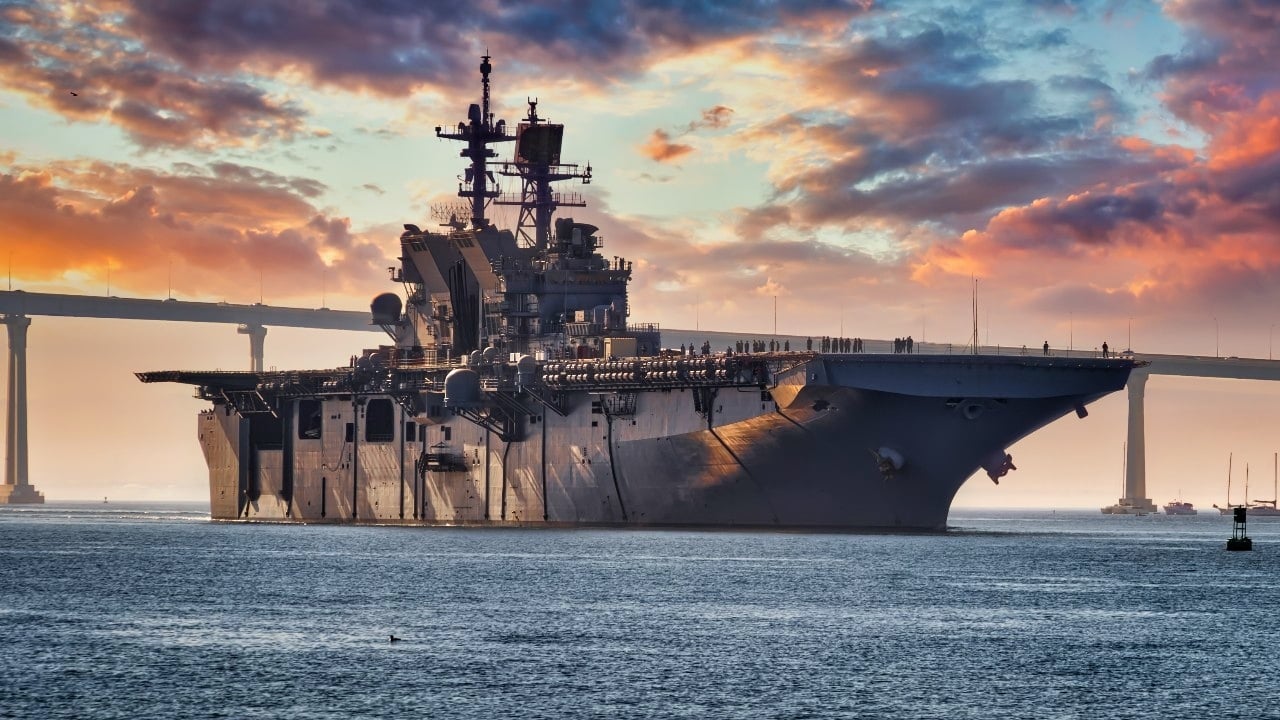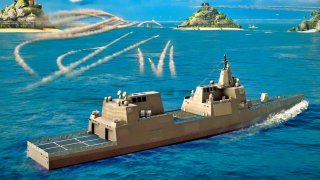China’s Shipbuilding Capacity: 232 Times Greater Than United States
China's shipbuilding capabilities now vastly outpace those of the United States, with a production capacity 232 times greater, a gap that continues to widen.
Summary and Key Points: China's shipbuilding capabilities now vastly outpace those of the United States, with a production capacity 232 times greater, a gap that continues to widen.
-While some argue that U.S. ships are technologically superior, Chinese warships are increasingly advanced, designed to overwhelm American vessels.
-The Ukraine war has further bolstered China’s military by deepening ties with Russia, which is sharing sensitive submarine propulsion technology.
-Meanwhile, U.S. naval forces face maintenance issues and lag behind China in ship numbers.
-America’s once-dominant naval power is at risk as China's naval advancements and strategic shipbuilding efforts continue to surge.
"China’s shipbuilding capacity is 232 times greater than that of the United States.”
That is the headline by Cathalijne Adams in a blog post for the Alliance for American Manufacturing in January 2023. The situation has only worsened for the Americans since then. A common response to the problem is to claim that while China may be able to build more ships, those ships are technologically inferior to those of the U.S. Navy.
Well, even that is wrong.
Chinese warships are increasingly technologically proficient. What’s more, they are designed with the specific intention of overwhelming U.S. warships with superior firepower. Further, the Ukraine War, which has alienated both China and Russia from the West and sent the two countries into a warm embrace. Moscow announced that it will begin sharing with China the specifications for advanced submarine propulsion systems that previous Russian governments had refused to share with Beijing.
These capabilities, combined with China’s impressive manufacturing capacity, means only one thing: America’s days of fielding the largest and most technologically advanced navy are numbered.
But don’t just take it from me.
The Broken U.S. Navy
Look at the sad state of existing U.S. Navy warships. Countless warships have been photographed with rusty, discolored hulls. This indicates they are being run ragged and are not properly maintained, likely due to the constraints of U.S. military shipyards, as well as deferred maintenance.
China’s People’s Liberation Army Navy (PLAN) has grown decisively, in sophistication as well as numbers. In fact, some reports suggest that the PLAN will reach 435 ships by 2030.
The U.S. Navy, on the other hand, has around 300 ships. This has created a numerical imbalance between the U.S. Navy and the PLAN. At some point, China will no longer be deterred by the simple presence of an American flat top sailing very near China’s shores.

American warships are technically superior to China’s – for now. One area U.S. warships have an advantage over their PLAN rivals is in the domain of radar systems, missile defense, and electronic warfare (EW). Plus, the U.S. Navy leads the world in number of aircraft carriers. Sadly, these platforms are increasingly obsolete. China’s development of anti-access/area-denial (A2/AD) systems that could destroy the aircraft carriers in question is a sign that America should stop building these vessels.
How did the United States go from the “arsenal of democracy” 80 years ago to having no weapons to spare at all?
The Dangerous, Violet Path to Peace
The answer, as Indian geopolitical analyst, S.K. Kanthan, so eloquently tweeted, can be found here: “America—deindustrialized and ruined by financial cabal.” At the same time that American elites convinced themselves and much of the world that deindustrializing the American heartland was a good idea, China used those newfound manufacturing capabilities to become a world-class shipbuilder.
China’s shipbuilders are supported by a modern and large defense industrial base. State subsidies are given to the shipbuilders, and the Chinese shipyards have but one mission: to make China the world’s leading power.
At some point, soon, I fear, the Americans won’t be able to bluff their way out of a possible fight.
Author Experience and Expertise: Brandon J. Weichert
Brandon J. Weichert, a National Interest national security analyst, is a former Congressional staffer and geopolitical analyst who is a contributor at The Washington Times, the Asia Times, and The-Pipeline. He is the author of Winning Space: How America Remains a Superpower, Biohacked: China’s Race to Control Life, and The Shadow War: Iran’s Quest for Supremacy. His next book, A Disaster of Our Own Making: How the West Lost Ukraine, is due October 22 from Encounter Books. Weichert can be followed via Twitter @WeTheBrandon.
All images are Creative Commons or Shutterstock.
From the Vault
Russia Freaked Out: Why the U.S. Navy 'Unretired' the Iowa-Class Battleships
Battleship vs. Battlecruiser: Iowa-Class vs. Russia's Kirov-Class (Who Wins?)


